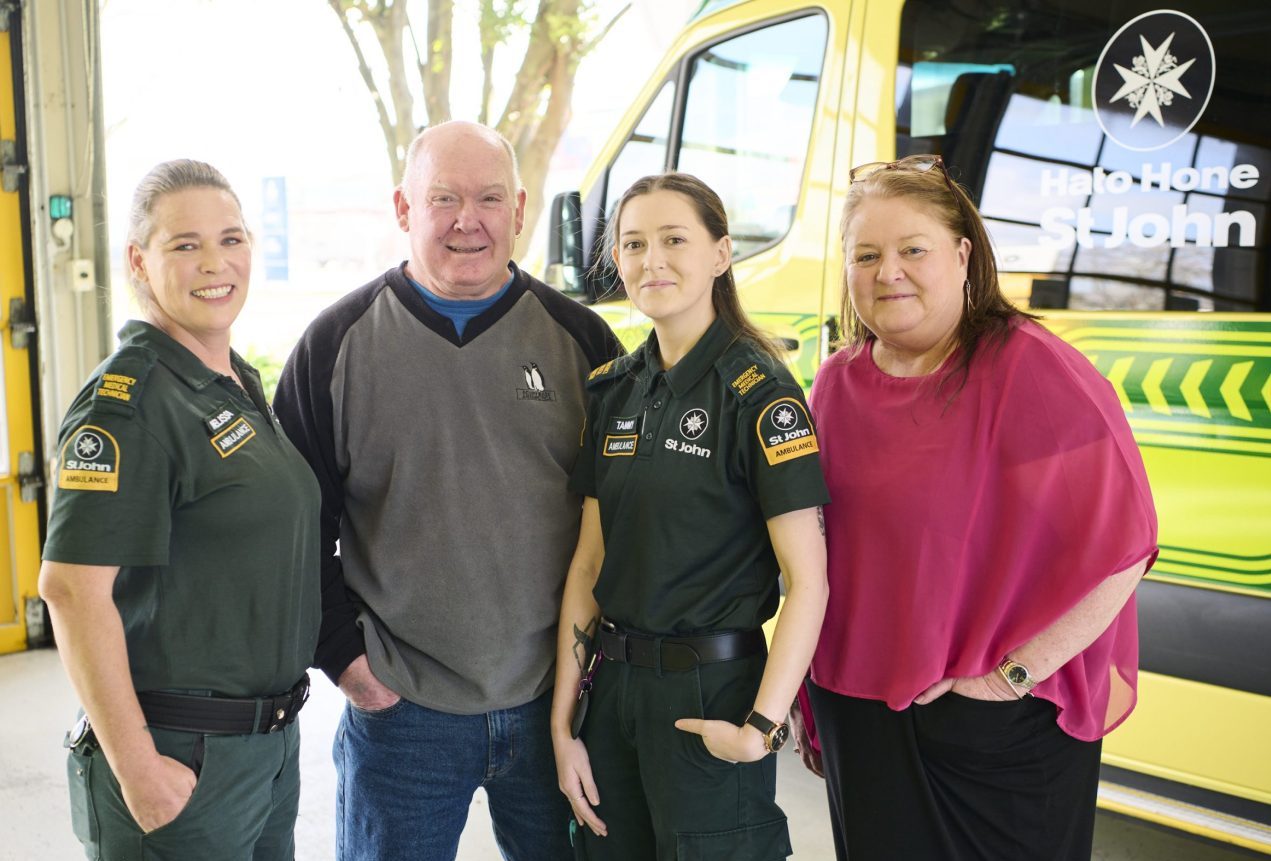|
Getting your Trinity Audio player ready...
|

Hato Hone St John is encouraging more New Zealanders to learn cardiopulmonary resuscitation (CPR) as out-of-hospital cardiac arrests continue to increase.
The latest Out-of-Hospital Cardiac Arrest (OHCA) Report reveals 2547 people were treated for cardiac arrest in the past year – a 3.6 per cent rise from the previous year.
Of these cases, 72 per cent occurred at home, reinforcing the importance of knowing CPR.
The recently released national report details data from all OHCA incidents attended by Hato Hone St John (HHSJ) and Wellington Free Ambulance (WFA) between July 2023 and June 2024.
HHSJ clinical services deputy chief executive Dr Damian Tomic says with most cardiac arrests happening at home, knowing CPR can be the difference between life and death.
“Given we spend most of our time with loved ones, friends, or colleagues, there’s a good chance that if you witness a cardiac arrest, it will be someone you know,” Dr Tomic says.
“Anyone can learn CPR and knowing how to do it could save a life.”
HHSJ says it’s committed to improving survival rates through key initiatives, including free CPR and AED (automated external defibrillator) training programmes.
The OHCA report shows 24 per cent of people who suffered a cardiac arrest survived to hospital arrival, while only 11 per cent survived 30 days post-event.
To address this, HHSJ developed a Cardiac Arrest Survival Improvement Strategy aimed at improving patient outcomes.
“Our strategy ensures that every person experiencing a cardiac arrest receives immediate, high-quality care, significantly increasing survival rates and quality of life,” Dr Tomic says.
The strategy focuses on four key areas:
- Equitable access to defibrillators and training – making life-saving tools and knowledge available in communities with the greatest need.
- Early and equitable system response – ensuring that cardiac arrests are recognised early, and the closest responder is quickly dispatched.
- Excellent clinical care – delivering the highest standards of care to every patient, guided by evidence-based best practices.
- Achieving more through collaboration – working alongside communities, emergency services, health providers, and valued partners to build a stronger chain of survival.
- Free CPR training and GoodSAM app.
HHSJ also runs the 3 Steps for Life programme, offering free CPR and AED training.
In the year ending June 2024, HHSJ delivered 875 one-hour sessions to 39,863 people across the country.
In addition, HHSJ and WFA uses GoodSAM, a free app connecting trained responders with cardiac arrest cases in real time.
“Every second counts in a cardiac arrest, and GoodSAM helps provide life-saving support before emergency services arrive,” Dr Tomic says.
WFA medical director for education, research and training Dr Andy Swain explains that “time counts in a sudden cardiac arrest”.
“We know most people experience these at home so it’s very important to know the warning signs and what to do if a loved one or neighbour needs assistance.
“Chest pain, a feeling of tightness, pressure or squeezing in the chest alongside shortness of breath, dizziness, clammy skin, palpitations and fatigue are all signs for concern and you should call 111 immediately,” Dr Swain says.
“Another important way for people to be prepared is to know where the closest community 24/7 AED is located.
“With immediate CPR, using an AED more than doubles the chance of survival which is what we would undoubtedly want for ourselves and our loved ones.”
Other OHCA report facts:
- 69 per cent of people treated for an OHCA were male.
- 24 per cent of OHCA events were attended by a GoodSAM responder.
- 7 per cent received defibrillation by a community responder prior to ambulance arrival.
- The most common place for an OHCA to occur is in a person’s home (72 per cent), followed by a public area (15 per cent), which includes the workplace, street, shopping centre or similar.
- 83 per cent of witnessed OHCA received bystander CPR.
- To sign up for a full first aid course visit stjohn.org.nz/firstaid.











